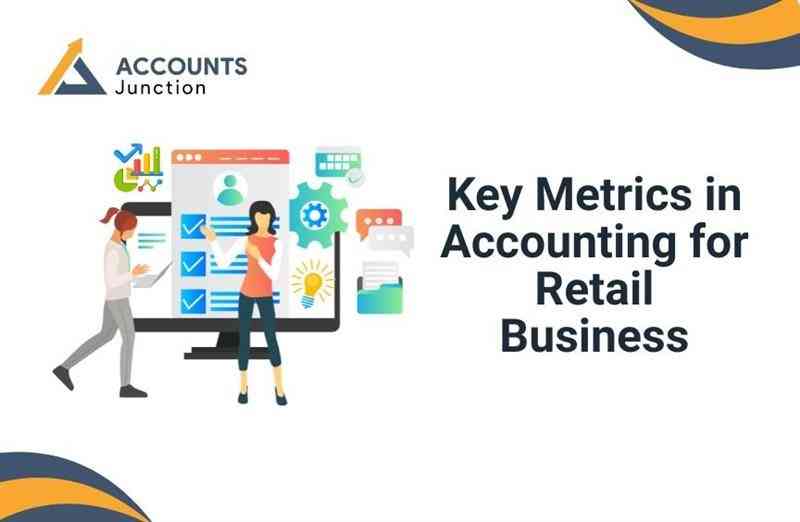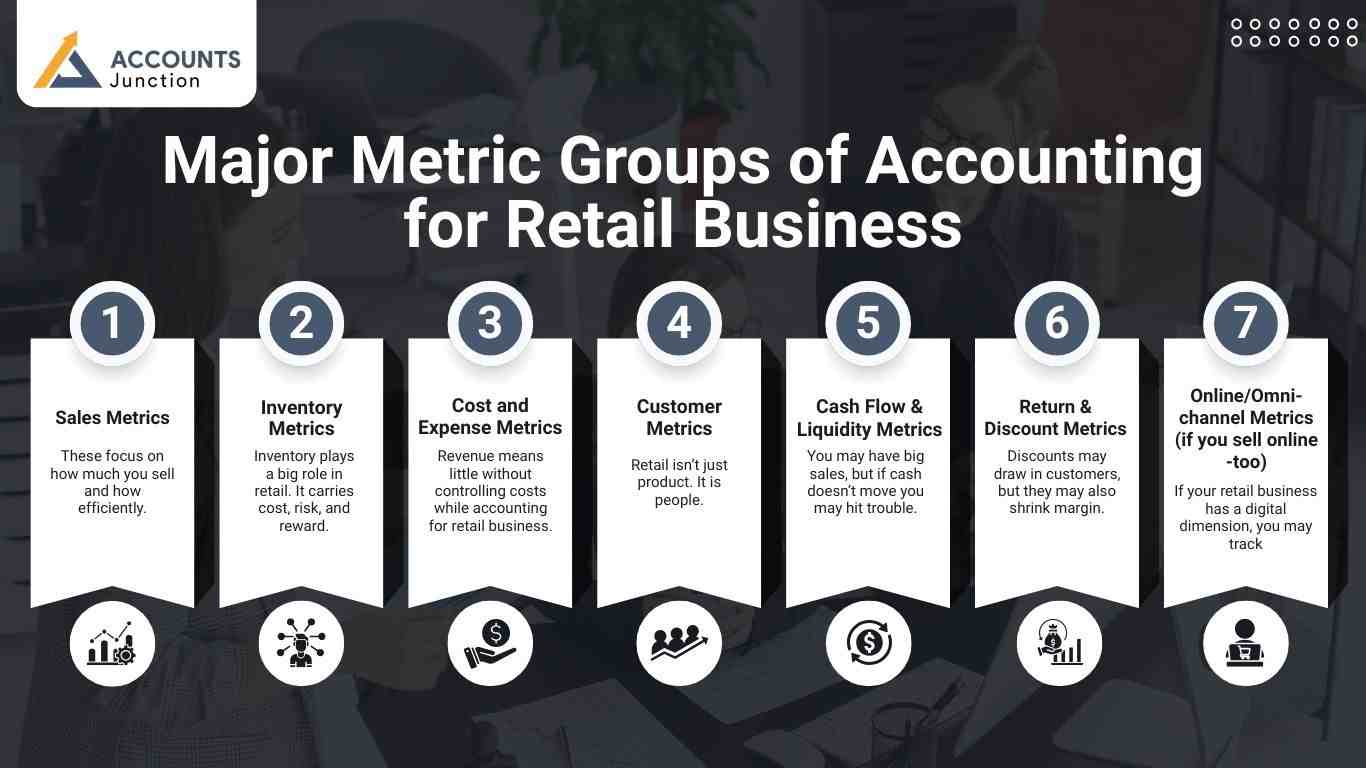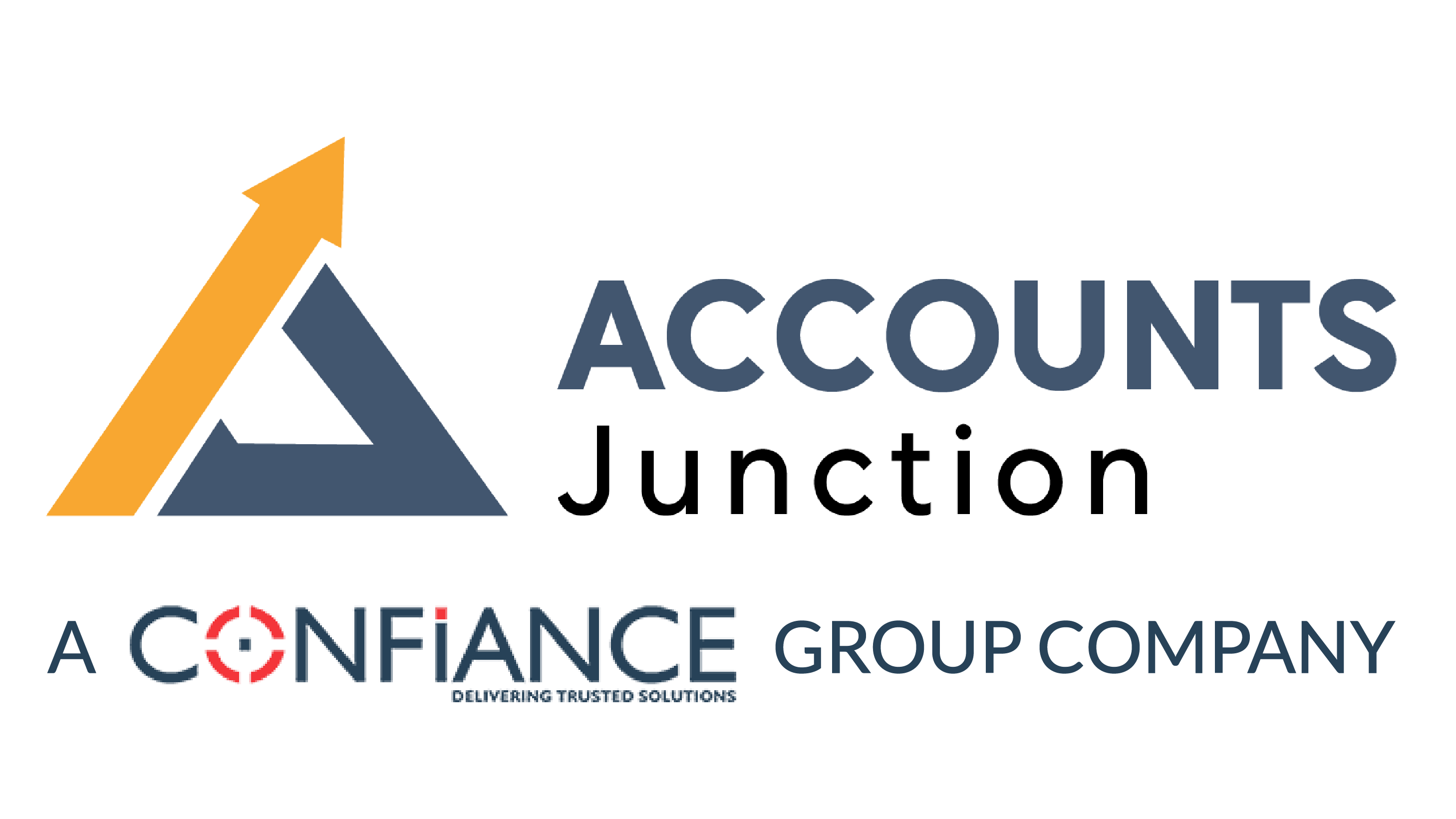
Key Metrics in Accounting for Retail Business
When you handle accounting for retail business, you face many moving parts—stock, cash, returns, discounts, staff costs, rent, and more. So, to understand the performance of all these aspects, you have to rely on certain key metrics. These metrics can act like guideposts, helping you understand your business during ups and downs.
In this blog, we’ll explore those metrics, why they matter, how you can track them, and what they indicate. These metrics will be flexible as they can shift depending on your store size, location, product mix, and customer types.
Use of Metrics in Retail Accounting
While accounting for retail business, metrics are really important. With metrics, you are not just counting cash. You are trying to understand health, trends, and risks in the business.
- Mistakes may be hidden behind tall sales numbers.
- A busy store may still bleed money if costs are too high.
- You may think inventory is fine, yet you could be carrying too much dead stock.
Hence, metrics become your watchers and your mirrors. They may show you what you did, what you’re doing, and what you might do.
Major Metric Groups of Accounting for Retail Business
Let’s break down by group. Each group covers a set of metrics that tie together.
1. Sales Metrics
These focus on how much you sell and how efficiently.
a) Total Sales (or Gross Sales)
This is simply how much money you’ve taken in before deducting refunds or discounts.
It may help you see growth over time or identify sluggish periods.
b) Net Sales
Once you subtract returns, discounts, allowances—you get net sales.
Important because high gross sales might mask heavy discounts or lots of returns.
c) Sales Growth Rate
How much did your sales increase (or decrease) compared to a prior period?
This may show rising demand or reflect seasonal dips.
d) Sales per Square Foot (or per Store)
In a physical retail setting you may look at how much revenue each square foot generates.
Can help in comparing performance of different locations.
e) Same-Store Sales (or Comparable Store Sales)
For chain retailers this looks at stores open for a specified time and compares them period to period.
Helps you avoid skewing results by including newly opened stores.
2. Inventory Metrics
Inventory plays a big role in retail. It carries cost, risk, and reward.
a) Inventory Turnover Ratio
How many times you sold and replaced your inventory in a given period.
Lower number may mean you’re stuck with slow-moving stock.
b) Days Inventory Outstanding (DIO)
How many days on average your stock sits before you sell it.
Higher days may signal that some items are lingering unsold.
c) Stock-to-Sales Ratio
Stock on hand divided by sales over a period.
May show if you are over-stocked or under-stocked.
d) Shrinkage Rate
Lost inventory due to theft, damage, errors.
It may erode your margin silently.
3. Cost and Expense Metrics
Revenue means little without controlling costs while accounting for retail business.
a) Cost of Goods Sold (COGS)
What you paid (or cost) to engage the goods you sold.
Important because margin is derived from sales minus COGS.
b) Gross Margin
Often net sales minus COGS, divided by net sales.
Shows what portion of sales remains after covering direct cost.
c) Operating Expense Ratio
Total operating expenses divided by net sales.
Helps you measure how much you spend to generate each rupee of sales.
d) Rent, Utilities, Labour Costs as % of Sales
These may matter a lot in retail because your store space, staff, and utilities may dominate cost structure.
4. Customer Metrics
Retail isn’t just product. It is people.
a) Customer Count or Foot Traffic
How many people enter your store (or visit your site) in a period.
Higher foot traffic may be good but only if conversion is good.
b) Conversion Rate
Of those who enter, how many actually buy?
A low conversion may mean site layout, staff, product mix or pricing issues.
c) Average Transaction Value (ATV)
Total sales divided by number of transactions.
Raising ATV may be a way to grow without raising foot traffic.
d) Average Items per Transaction
More items per purchase often means better efficiency, less cost per sale.
e) Customer Lifetime Value (CLV)
How much revenue one customer brings over time.
Important if you are in a repeat sale business (loyal customers).
5. Cash Flow & Liquidity Metrics
You may have big sales, but if cash doesn’t move you may hit trouble.
a) Days Sales Outstanding (DSO)
If you sell on credit, how many days you wait to get paid.
Retail often is cash based, but any credit terms matter.
b) Current Ratio
Current assets divided by current liabilities.
Gives you a sense of short-term financial strength.
c) Cash Conversion Cycle
How many days from paying for stock to getting paid by customer.
Shorter is better for most retail.
6. Return & Discount Metrics
Discounts may draw in customers, but they may also shrink margin.
a) Return Rate
Percentage of sold items returned by customers.
High return rate may signal quality, fit, or expectation problem.
b) Discount Rate
Total discounts given divided by gross sales.
It may eat into your margin significantly.
7. Online/Omni-channel Metrics (if you sell online too)
If your retail business has a digital dimension, you may track:
- Website conversion rate
- Cart abandonment rate
- Cost per online acquisition
- Online vs in-store sales mix
How to Set Up Your Metric-Tracking System
Tracking metrics is not just listing numbers. It involves process.
Step 1: Define Your Purpose
What do you want your accounting for retail business to reveal?
Is your key aim growth, margin improvement, inventory efficiency, or all of these?
Step 2: Choose the Right Metrics
Pick the ones from above that matter most for your store.
If you are small with one location you may skip same-store sales but focus on ATV, foot traffic, DIO.
Step 3: Set Targets
Once you know your metric, you can set benchmarks or goals.
For example you can aim to reduce days inventory outstanding by 10 days in a year.
Step 4: Collect the Data Consistently
Sales, inventory, customer traffic, returns must be recorded in a reliable system.
Errors in data will mis-lead you.
Step 5: Analyse and Interpret
Numbers by themselves may not tell story. Ask why:
- Why did inventory turnover slow this month?
- Why did conversion rate drop?
- Why is discount rate rising?
Step 6: Take Action
Based on analysis you may take steps:
- Adjust pricing or promotions.
- Change supplier, reduce slow-moving stock.
- Improve staff training, improve store layout.
Step 7: Review and Adapt
Retail changes fast. What worked last year may not work now.
Your metric list may evolve.
Common Mistakes to Avoid
- Focusing on too many metrics: you may get overwhelmed.
- Ignoring the story behind the numbers: numbers without context mis-lead.
- Using outdated data: real-time or at least regular updates matter.
- Comparing apples with oranges: chain stores and single outfits differ.
- Ignoring cost side: big sales feel good but margin could be bad.
- Treating metrics as targets rather than signals: chasing a number blindly can cause harm.
Why These Metrics Help in Accounting for Retail Business
When you do accounting for retail business with these metrics in mind, you may gain:
- Clarity on what drives profit.
- Early warning of trouble (inventory piling up, margin dropping).
- Better decisions (which products to push, where to invest).
- A view of interplay: cost, price, volume.
- Ability to adapt to market changes: e-commerce, customer behaviour shift.
A Practical Example Walk-Through
Imagine a store of small to medium size. We pick a few metrics:
- Net sales this quarter: ₹ 10 million.
- Cost of goods sold: ₹ 6 million → gross margin is 40 %.
- Inventory on hand: ₹ 2 million. Annual sales equivalent may be ₹ 40 million (4x).
- Days inventory outstanding: 365÷4 = about 91 days.
- Discount rate: 8 % of gross sales.
- Return rate: 5 %.
- Average transaction value: ₹ 2,000. Foot traffic 15,000 visits this quarter gives ~5,000 transactions → roughly aligns.
From this you can ask:
- Is 91 days too high in this product category? Could we aim for 70 days?
- Is discount rate of 8 % squeezing margin? Could promotions be more targeted?
- Can we increase ATV via bundling or upselling?
- With returns at 5 %, what causes returns? Could quality or size fit issue be addressed?
Such questions flow from the metrics. Your accounting for retail business becomes not just number-keeping but decision-fuel.
With a set of key metrics you can get control over your business. Pick a handful of metrics that matter most for your business. Track them reliably. Analyse, act, and repeat. Over time you will find that what once felt random becomes structured and manageable. Are you struggling with accounting for your retail business? At Accounts Junction, we handle accounting for retail businesses around the world with key metrics as per their business. If you also want your business to be managed by an expert bookkeeper, contact us now!
FAQs
1. What does accounting for retail business mean?
- It means tracking sales, costs, stock, and cash in a retail store setting to understand how money flows and how profit is made. It includes both the financial records and the metrics that tell you how the business is doing.
2. Why is tracking inventory turnover important in retail?
- Because if your stock turns slowly you tie up money in goods not selling. Faster turnover may mean less risk and better cash flow.
3. Can I use the same metrics for online retail and physical retail?
- Not all. For online you may emphasise conversion, cart abandonment, customer acquisition cost which differ from foot traffic or sales per square foot.
4. What is gross margin and why does it matter?
- Gross margin is net sales minus cost of goods sold, divided by net sales. It shows how much of each rupee of sales you keep after covering direct cost.
5. How often should I review these metrics?
- Monthly is a good starting point. Weekly might work if you have high volume or want rapid feedback.
6. Does high sales always mean healthy business?
- Not necessarily. If costs, discounts or returns are high then profit may still be low.
7. What is same store sales and when should I use it?
- It measures sales change for stores open over a defined period, excluding new stores. It is useful if you run multiple stores and want comparable data.
8. How can I reduce days inventory outstanding?
- You can reduce it by better forecasting, improving sales rate, removing slow items. You can also work with suppliers for faster replenishment.
9. What is cost of goods sold (COGS)?
- COGS is the direct cost for the goods you sold during a period (purchase cost, freight, etc). It excludes indirect operating costs like rent, utilities, or salaries.
10. Why should I track average transaction value (ATV)?
- Because increasing ATV means you earn more per customer without more foot traffic. It can boost profitability if done without huge extra cost.
11. What is the shrinkage rate and how it impacts retail?
- Shrinkage is the loss of inventory due to theft, damage, or error. It reduces actual goods available for sale and thus cuts margin.
12. Should I only focus on metrics that look good?
- No. You should also focus on weak metrics because they may point to issues needing fixes.
13. How can I deal with many metrics and not feel overwhelmed?
- Pick a small set of core metrics (say 5-10) that matter most for you. Use dashboards or spreadsheets to track and highlight key ones.
14. Does accounting for retail business differ by geography?
- Yes. Costs, customer behaviour, seasonality, tax, supply chain differ by region — so metrics may need adapting.
15. Can a small retail store use the same tools as big chains?
- You can use scaled-down versions. Many software packages or spreadsheets suit small stores; you just pick fewer metrics.
16. What if my metric targets keep missing?
- Then you may need to re-examine your targets, your assumptions, and underlying operations. It may be a signal something deeper is off.
17. How important is foot traffic compared to conversion rate?
- Both matters. High foot traffic without conversion still doesn’t translate to sales, so conversion rate may be more telling.
18. Can discounts help metric improvement?
- Yes but with caution. While discounts may boost sales or foot traffic they may hurt margin and skew metrics negatively in terms of profitability.
19. Should online metrics be integrated into retail accounting?
- If you sell both online and offline, yes. You want a unified view because costs, returns, customer behaviour cross channels.
20. Is metric tracking enough by itself?
- No, tracking is just step one. What matters is analysing, interpreting, and acting on what you find.

